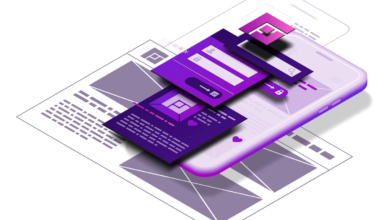The Role of Live Forex Rates in Developing Machine Learning Trading Models
live forex rates

If you’re into forex trading, you’ve probably noticed how fast markets change. That’s why real-time data, like live forex rates, is key to staying on top of trends. But what if I told you there’s another level? Machine learning models are now being used to predict market moves and make better trading decisions. And guess what? They rely heavily on real-time live currency rates today and exchange rate today data.
In this article, we’re going to dive into how live forex rates are helping traders develop machine learning models for forex trading. We’ll break it down in simple language (no PhD required) and show how this combination is shaping the future of trading.
Why Machine Learning in Forex Trading?
Let’s face it, humans aren’t great at making decisions under pressure, especially when there are tons of variables at play, like in the forex market. Machine learning (ML) models can analyze massive amounts of data and pick out patterns that we might miss. These models are trained using historical and live forex market data to identify trends, predict price movements, and even automate trades.
But for these models to be effective, they need a steady stream of accurate, up-to-date information—cue live currency rates today and exchange rate today. Without real-time data, machine learning models would be flying blind.
Personal Insight
I’ve been trading for a few years now, and while manual strategies worked for a while, I noticed that ML-based systems were outperforming me. That’s when I started exploring how these models work, and it was eye-opening to see how much they rely on live forex rates to deliver accurate results.
The Importance of Live Forex Rates for Machine Learning
Why are live forex rates so important in machine learning models? The answer is simple: the forex market is constantly moving, and even a slight delay in data can lead to missed opportunities or poor decisions. Here’s how live data plays a crucial role:
1. Real-Time Decision Making
In forex trading, timing is everything. A decision that’s made a few minutes late can cost you. By using live currency rates today, ML models can adjust predictions in real time, ensuring that trades are executed when the conditions are just right. If the model uses yesterday’s exchange rate today, it might make decisions based on outdated information, leading to suboptimal results.
2. Improved Accuracy in Predictions
Machine learning models are like sponges—they absorb tons of data to make predictions. The more accurate the data, the better the predictions. When you feed a model live forex rates, it gets a clearer picture of the current market conditions, making its predictions more accurate.
For example, if the model sees a sudden shift in the exchange rate today for a major currency pair like EUR/USD, it can instantly adjust its predictions based on that new information.
3. Adapting to Market Trends
Forex markets are influenced by countless factors—news events, political changes, interest rate decisions, and more. Machine learning models need to adapt to these trends as they unfold, which is why real-time data is so crucial. By monitoring live forex rates and reacting to trends as they develop, ML models can help traders stay ahead of the game.
How Live Forex Rates Enhance Machine Learning Models
Let’s break down how real-time data integrates into machine learning models for trading:
1. Data Collection and Preprocessing
Before a machine learning model can start making predictions, it needs data. Live currency rates today and exchange rate today data are fed into the model, which then preprocesses this information to clean it up, remove any noise, and make it usable for training.
2. Model Training
Once the data is preprocessed, the model is trained to identify patterns and trends in the forex market. The more historical and live data it has, the better it gets at predicting future movements. During this phase, live data helps the model understand how currencies react to different market conditions.
3. Testing and Validation
After training, the model is tested on unseen data to validate its accuracy. This is where live forex rates really shine. By testing the model’s predictions against real-time data, traders can gauge how well the model performs in a live environment.
4. Real-Time Predictions and Trading
Finally, the model is ready to be used in real trading. It continuously receives live forex rates and adjusts its predictions based on current market conditions. This allows traders to automate their strategies and make decisions that are faster, more accurate, and often more profitable than manual trading.
Personal Example
I started using an ML-based trading model that relied on live currency rates today, and the difference was immediate. The model was able to spot trends faster than I could, and I saw an increase in my overall profitability. It made me realize just how powerful real-time data is when combined with machine learning.
The Role of FXpricing in Machine Learning Trading
Of course, having a great machine learning model is useless if you don’t have a reliable source of data. This is where platforms like FXpricing come in. FXpricing offers a range of real-time tools, including live forex rates, exchange rate today, and historical data, all of which are essential for training and running machine learning models.
Here’s why FXpricing is a great choice for traders using machine learning:
- Accurate Data: FXpricing collects data from leading financial institutions and central banks, ensuring that your machine learning model gets the most accurate information possible.
- Real-Time Updates: With access to live currency rates today, your model can make decisions based on the most current market data.
- Customizable Dashboards: FXpricing allows you to customize your data feed and view real-time trends in a way that suits your trading style.
Common Pitfalls in Using Machine Learning for Forex Trading
While machine learning can be a game-changer in forex trading, it’s not without its challenges. Here are some common pitfalls to watch out for:
1. Overfitting
One of the biggest issues with machine learning models is overfitting, where the model becomes too focused on historical data and doesn’t generalize well to new data. This is why live data is so important—it helps the model stay flexible and responsive to current market conditions.
2. Data Quality
If your data is inaccurate or outdated, your machine learning model won’t perform well. Using real-time data like live forex rates from trusted platforms like FXpricing ensures that your model gets the best possible input.
3. Ignoring Market Volatility
Machine learning models can sometimes struggle with highly volatile markets, where price swings are unpredictable. This is why it’s crucial to combine real-time data with other risk management strategies.
Conclusion
Machine learning is transforming the way we trade forex, but without access to live forex rates and real-time data like live currency rates today and exchange rate today, even the best models can fall short. By using platforms like FXpricing to supply accurate, real-time data, you can supercharge your trading strategies and make better, faster decisions.
FAQs
- What are live forex rates?
Live forex rates refer to real-time updates of currency exchange prices that help traders make informed decisions. - Why are live currency rates today important for machine learning?
Live currency rates today ensure that machine learning models have the most current data to make accurate predictions and execute trades. - How does the exchange rate today affect trading models?
The exchange rate today provides immediate information on currency values, allowing machine learning models to adjust predictions and trading strategies in real time. - What role does FXpricing play in machine learning trading?
FXpricing offers reliable, real-time data that machine learning models need to function accurately, making it an essential tool for traders.
5. Can machine learning models be wrong in forex trading?
Yes, machine learning models can still make mistakes, especially if they’re overfitting or relying on poor-quality data. That’s why live data and constant monitoring are key.



